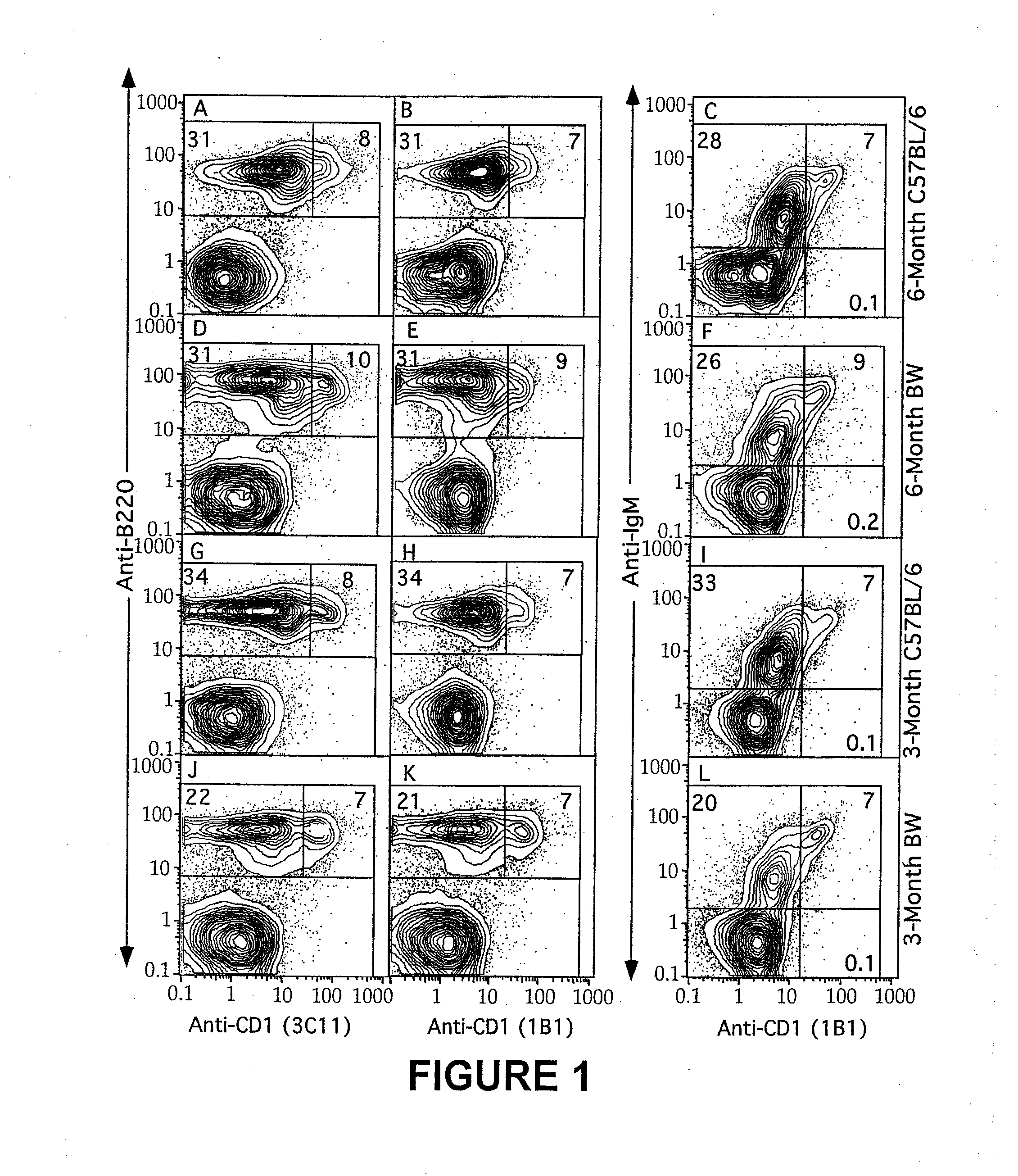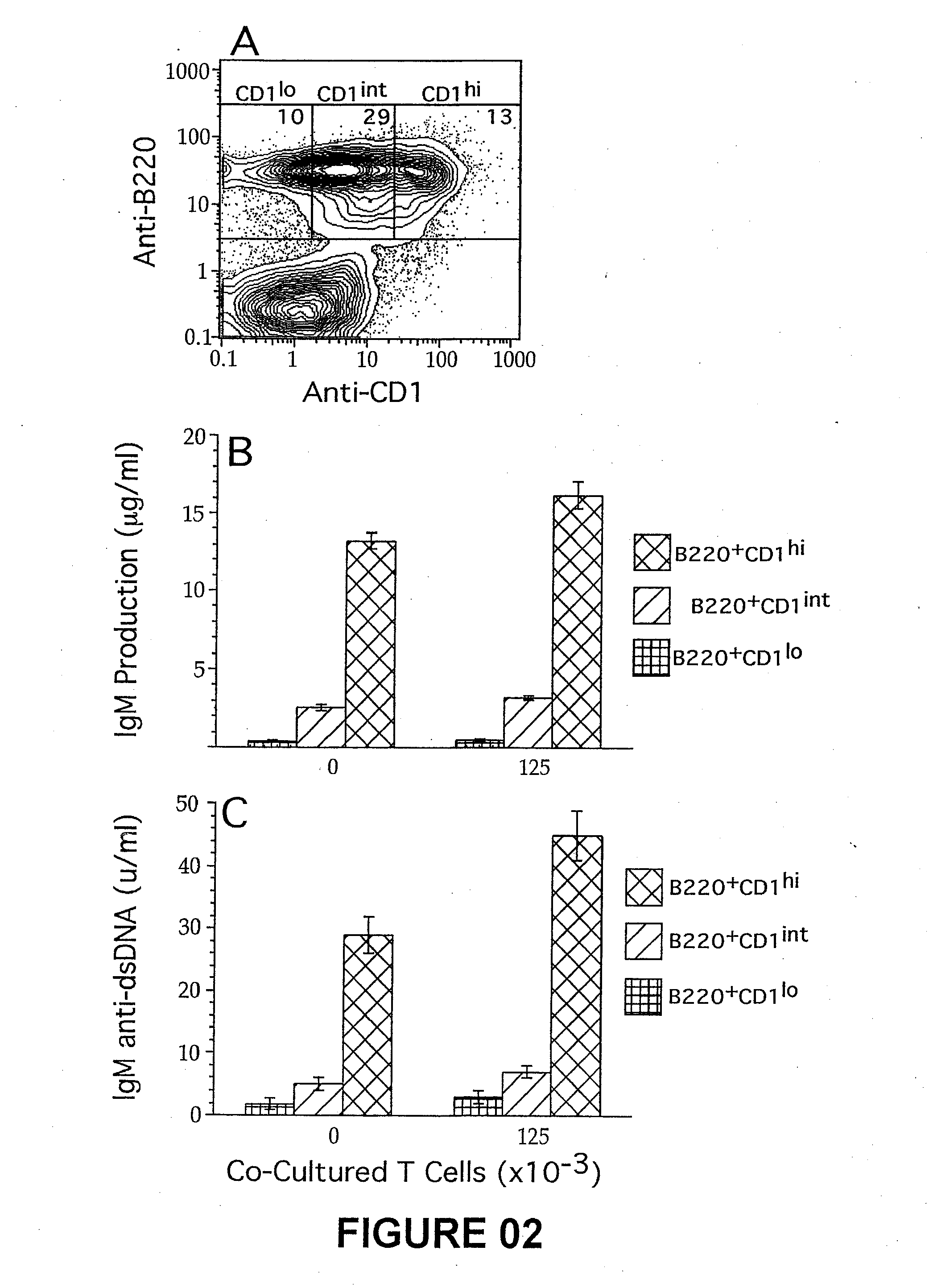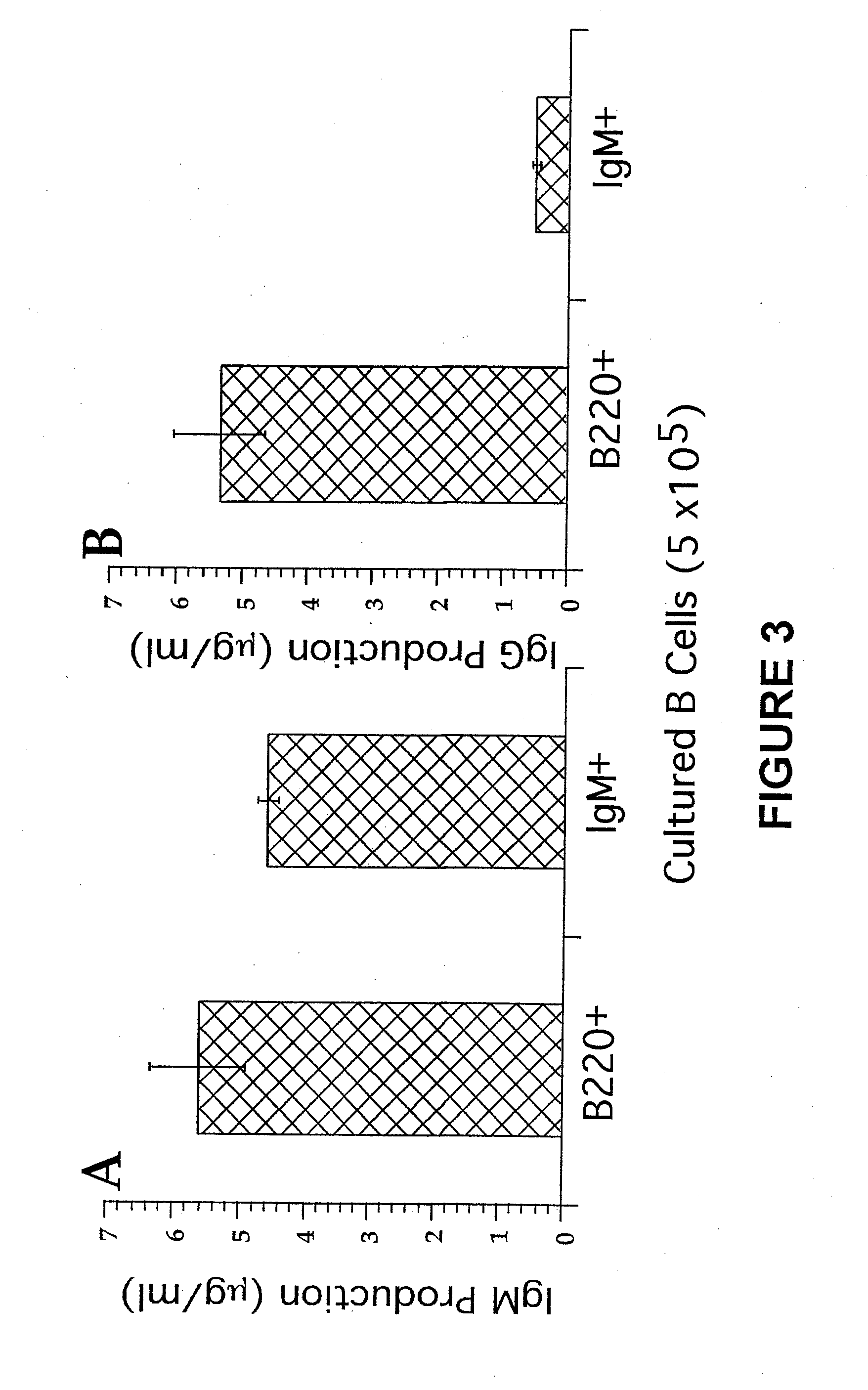Methods for inhibition of polyclonal b cell activation and immunoglobulin class switching to pathogenic autoantibodies by blocking cd1-mediated interactions
a technology of immunoglobulin class and autoantibodies, which is applied in the direction of antibody medical ingredients, phosphorous compound active ingredients, immunological disorders, etc., can solve the problems of difficult to study sle, disrupt cellular function, and tissue damage, so as to reduce the activation of polyclonal b cells, inhibit the function of t cells, and reduce the effect of t cell respons
- Summary
- Abstract
- Description
- Claims
- Application Information
AI Technical Summary
Benefits of technology
Problems solved by technology
Method used
Image
Examples
example 1
[0066]The role of CD1 in the development of lupus in NZB / NZW mice was examined. The results show that IgM+CD1hi B cells from the NZB / NZW spleen spontaneously secreted IgM and IgM anti-dsDNA autoantibodies at levels five to 25 fold higher than CD1int / lo B cells. CD1-reactive T cells were present in the spleen of NZB / NZW mice also. In vivo anti-CD1 mAb treatment reduced the peak levels of serum IgG and IgG anti-dsDNA antibodies, delayed the onset of proteinuria, and prolonged the survival period. These results demonstrate that CD1 is expressed on the precursors of IgM and IgG autoantibody-secreting B cells, and that the interaction between the CD1hi B cells and CD1 reactive T cells play an important role in the pathogenesis of lupus.
Materials and Methods
[0067]Mice. C57BL / 6 female mice were obtained from the Department of Comparative Medicine, Stanford University breeding facility. NZB / NZW female mice were purchased from The Jackson Laboratory (Bar Harbor, Me.).
[0068]Monoclonal Antibod...
PUM
| Property | Measurement | Unit |
|---|---|---|
| Solubility (mass) | aaaaa | aaaaa |
| Therapeutic | aaaaa | aaaaa |
Abstract
Description
Claims
Application Information
 Login to View More
Login to View More - R&D
- Intellectual Property
- Life Sciences
- Materials
- Tech Scout
- Unparalleled Data Quality
- Higher Quality Content
- 60% Fewer Hallucinations
Browse by: Latest US Patents, China's latest patents, Technical Efficacy Thesaurus, Application Domain, Technology Topic, Popular Technical Reports.
© 2025 PatSnap. All rights reserved.Legal|Privacy policy|Modern Slavery Act Transparency Statement|Sitemap|About US| Contact US: help@patsnap.com



